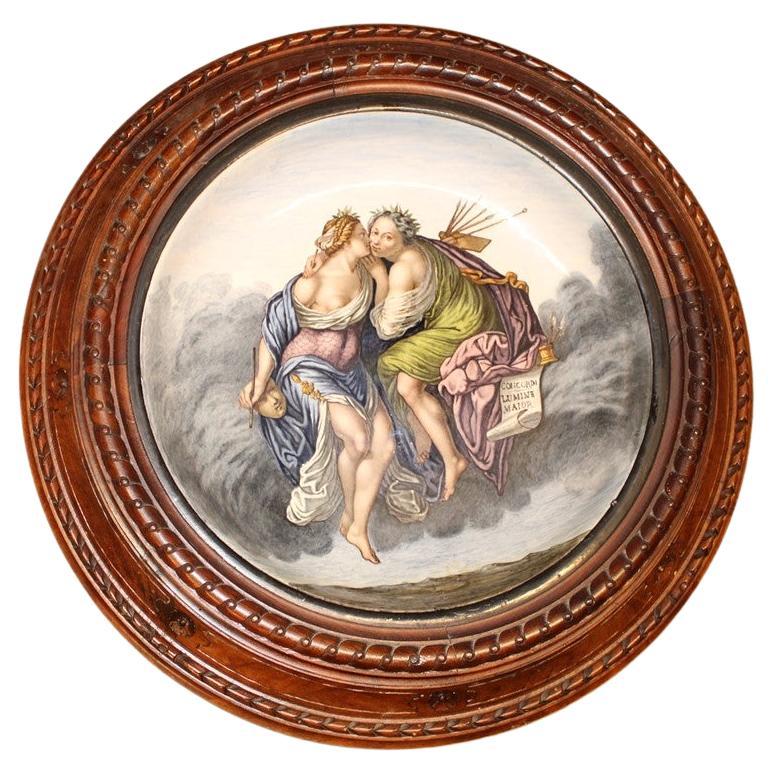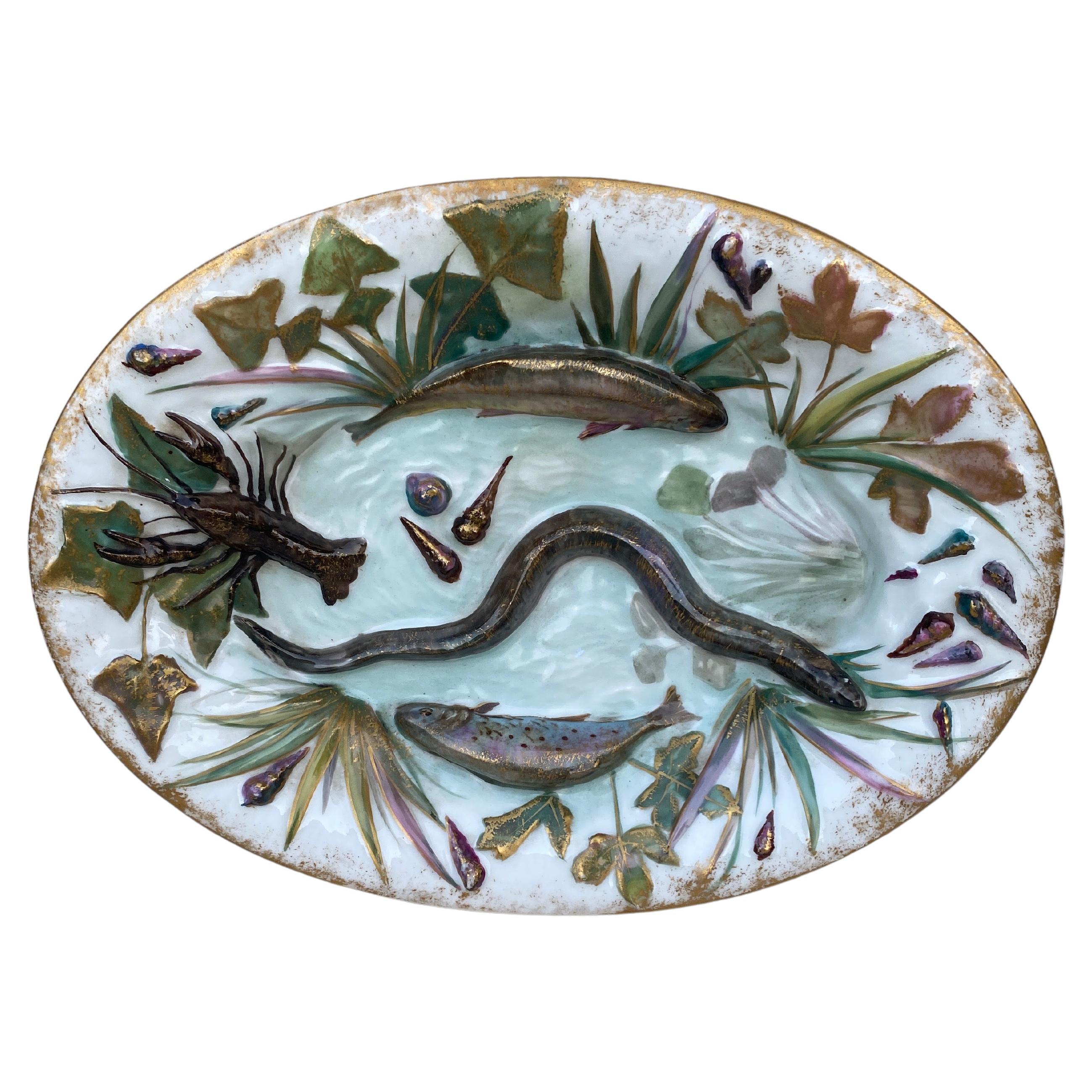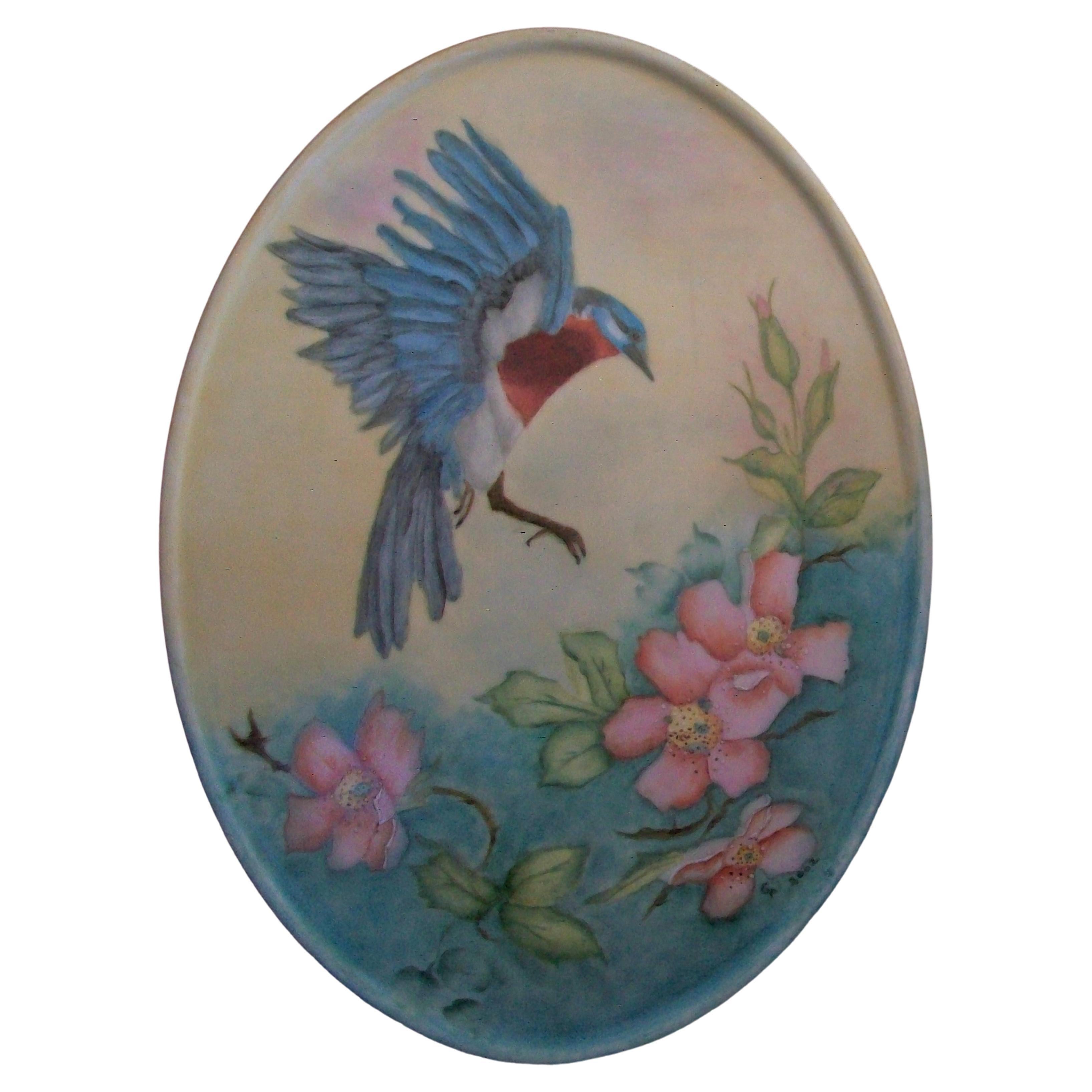Items Similar to Parrot Porcelain , 1945
Video Loading
Want more images or videos?
Request additional images or videos from the seller
1 of 17
Parrot Porcelain , 1945
About the Item
Material: porcelain
Porzellanfabrik Karl Ens was established in 1899 but it wasn't first porcelain business of the Ens family. Karl Ens (senior) founded in 1860 the Triebner, Ens & Co. In 1899 he left the company starting a new business, which swiftly gained reputation for producing high quality items.
Porzellanfabrik Karl Ens se estableció en 1899, pero no fue el primer negocio de porcelana de la familia Ens. Karl Ens (senior) fundó en 1860 Triebner, Ens & Co. En 1899 dejó la empresa y comenzó un nuevo negocio, que rápidamente ganó reputación por producir artículos de alta calidad.
Porzellanfabrik Karl Ens was established in 1899 but it wasn't first porcelain business of the Ens family. Karl Ens (senior) founded in 1860 the Triebner, Ens & Co. In 1899 he left the company starting a new business, which swiftly gained reputation for producing high quality items.
A company founder had two sons, Karl and Eduard. Karl junior ran the factory from 1919 to 1939. In 1972 the company was nationalized and became a part of VEB Sitzendorfer Porzellanmanufaktur as VEB Unterglasurporzellanfabrik.
Finally in 1990 the factory was privatized again.
We have specialized in the sale of Art Deco and Art Nouveau and Vintage styles since 1982.If you have any questions we are at your disposal.
Pushing the button that reads 'View All From Seller'. And you can see more objects to the style for sale.
Why are there so many antiques in Argentina?
In the 1880 – 1940 there was a grate wave of immigration encouraged by the periods of war that were taking place.
1st World War took place between 1914 and 1918
2nd World War took place between 1939 and 1945
The immigrants options were New York or Buenos Aires. Tickets were cheap and in Buenos Aires they were welcomed with open arms, as it was a country where everything was still to be done.
Argentina was the country of new opportunities, labour was needed and religious freedom was assured, in many cases the of the family travel first until they were settled and then the rest of the family members join them.
In the immigrant museum “Ellis Island Immigrant Building” in New York you can se the promotional posters of the boats that would take them to a new life.
Between the years 1895 and 1896, Argentina had the highest DGP (gross domestic product) per capita in the world according to the Maddison Historical Statistics index, this situation arose due to the large amount of food being exported to European countries, which were at war.
The Argentinean ships left the port of Buenos Aires with food, but they returned with furniture, clothes and construction elements, (it´s common to see this the old buildings of the historic neighbourhood of San Telmo, the beams with the inscription “Made in England)”, as well as many markets that were built in Buenos Aires, such us the San Telmo Market, whose structure was brought by ship and afterwards assembled in 900 Defensa Street.
With the great influence of European immigrants living in the country, the children of the upper classes travelled to study in France, resulting in the inauguration of “La Maison Argentinienne”, on 27th of June 1928, in the international city of Paris, which hosted many Argentinians that were studying in Frace.
It´s the fourth house to be built after France, Canada and Belgium, being the first Spanish-speaking one. Still in place today (17 Bd Jourdan, 75014, Paris, France). Many of the children of these wealthy families who attended international art exhibitions, museums and art courses abroad, took a keen interest in the European style. This is why Buenos Aires was at the time referred as “The Paris of South America”.
Between the years 1890 and 1920 more than a hundred Palaces were built on Alvear Avenue the most exclusive avenue in Buenos Aires. Today some of these palaces have been transformed into museums, hotels and embassies.
In the year 1936, the Kavanagh building was inaugurated, it was the tallest reinforced concrete building in South America.
During 1994 the American Society of Civil Engineers distinguished it as an “international engineering milestone”, and it´s now considered a World Heritage of Modern Architecture.
At the time was common to hire foreign architects such as Le Corbusier, who visited Buenos Aires/Argentina in 1929 and in 1948 he drew up the blueprints for a house built in La Plata City (which was declared a World Heritage Site).
In 1947, the Hungarian architect Marcelo Breuer designed “Parador Ariston” in the seaside city of Mar del Plata. After an Argentinean student at Harvard University convinced him to come to Argentina. He worked on an urban development project in the Casa Amarilla, area of La Boca.
The Ukrainian architect, Vladimiro Acosta, arrives in Argentina in 1928 and worked as an architect until que moved to Brazil.
Antonio Bonet, a Spanish architect who worked with Le Corbusier in Paris, arrives in Argentina in 1937, where he carried out several architectural works and in 1938 designs the well-known BFK chair.
Andres Kálnay, of Hungarian origin, made around 120 architectural masterpieces, among which the former Munich brewery stands out, he even made the furniture’s design.
The German architect, Walter Gropius, director of the Bauhaus, lived in Argentina, where he wrote articles for “Sur” magazine and founded in Buenos Aires, an architectural firm with Franz Möller, who was also an architect, where he built two houses.
At the same time several famous designers decided to immigrate to Argentina, among them we can find the well-known French designer, Jean-Michel Frank, who arrived in the country in 1940 and also worked for the Rockefeller family.
Special pieces were made, which were sold exclusively in the country, such as the well-known German company “WMF”, who sold their products by catalogue, which were chosen by the ladies of High Society in the list of wedding gifts, as well as the pieces designed by Christofle.
The Swiss sculptor Alberto Giacometti, made special pieces for Argentinean mansions.
In 1904 the first Jansen branch outside Paris was established in Buenos Aires, as the Argentinean clientele demanded a large amount of furniture, from the end of the 19th century to the mid-20th century.
In 1970, the brand Rigolleau Argentina made pieces authorised by Lalique.
The brands Maple and Thompson also set up shop in the country.
The French plastic artist, Marcel Duchamp moved to Argentina in 1918-1919.
Glass signed Gallé, Charder, Leverre, Schneider, Muller and other French firms. They were bought in flower shops and were given to ladies with beautiful floral arrangements.
Some furniture manufacturers travelled to international fairs and bough the patterns to produce the furniture in Argentina, such as the furniture firm Englander and Bonta, who bought the patterns ins Italy.
It is worth mentioning that in Argentina we have the largest Community of Italians outside of Italy, as it is estimated that 70 percent of the inhabitants have at least one Italian descendant, followed by Spanish immigrants.
The most Important furniture stores in Argentina:
Comte is founded in 1934 (under the direct management of Jean Michel Frank in 1940).
Nordiska (Swedish company established in 1934).
Churba in 1960, a company that brought foreign designers to present their furniture in the country:
Denmark: (Arne Jacobsen, Finn Juhl, Bender Madsen, Ejner Larsen, Poul Kjaerholm, Hans Wegner)
Sweden: (Hans Agne Jakobsson, Gustavsberg)
United States: (Herman Miller)
Finland: (Lisa Johansson, Folke Arstrom, Tapio Wirkkala, Alvar Aalto, Timo Sarpaneva)
Swedish Factory: (Orrefors)
Italy: (Littala, Vico Magistretti, Emma Gismondi, Gae Aulenti, Angelo Mangiarotti, Elio Martinelli, Gianna Celada, Angelo Mangiarotti, Mario Bellini, Carlo Scarpa)
Finland: (Olivia Toikka)
Plata Lappas (Lappas Silver): a goldsmith shop founded in 1887 in Argentina by Alcibiades Lappas of Greek origin.
In 2019, in Argentina took place “the Art Deco world congress”, in which we participated as hosts invited by Geo Darder, founder of the Copperbridge – Foundation, in which prominent people from all over the world attended to learn about Art Deco in Argentina.
Argentina currently has more than 100 Art Deco buildings and another 90 Art Nouveau buildings throughout the city of Buenos Aires.
Argentina is a country that has not been involved in many wars, which is why it has been a refuge for works of art and antiques from different periods of time, unlike European countries. That is way many collectors, museums and antique dealers from all over the world visit it, you should not miss the opportunity to visit this great country.
Laura Guevara Kjuder, architect.
- Dimensions:Height: 12.6 in (32 cm)Width: 5.12 in (13 cm)Depth: 2.56 in (6.5 cm)
- Style:Mid-Century Modern (Of the Period)
- Materials and Techniques:
- Place of Origin:
- Period:
- Date of Manufacture:1945
- Condition:Wear consistent with age and use.
- Seller Location:Ciudad Autónoma Buenos Aires, AR
- Reference Number:
About the Seller
5.0
Vetted Seller
These experienced sellers undergo a comprehensive evaluation by our team of in-house experts.
Established in 1982
1stDibs seller since 2022
21 sales on 1stDibs
Typical response time: <1 hour
- ShippingRetrieving quote...Ships From: Ciudad Autónoma Buenos Aires, Argentina
- Return PolicyThis item cannot be returned.
More From This SellerView All
- Ceramic Plate, 1950Located in Ciudad Autónoma Buenos Aires, CMaterial: Ceramic We have specialized in the sale of Art Deco and Art Nouveau and Vintage styles since 1982.If you have any questions we are at your disposal. Pushing the button th...Category
Vintage 1950s Unknown Mid-Century Modern Decorative Art
MaterialsCeramic
- Ceramic Plate, 1950Located in Ciudad Autónoma Buenos Aires, CMaterial: Ceramic We have specialized in the sale of Art Deco and Art Nouveau and Vintage styles since 1982.If you have any questions we are at your disposal. Pushing the button th...Category
Vintage 1950s Unknown Mid-Century Modern Decorative Art
MaterialsCeramic
- Ceramic Plate, 1950Located in Ciudad Autónoma Buenos Aires, CMaterial: Ceramic We have specialized in the sale of Art Deco and Art Nouveau and Vintage styles since 1982.If you have any questions we are at your disposal. Pushing the button th...Category
Vintage 1950s Unknown Mid-Century Modern Decorative Art
MaterialsCeramic
- Ceramic ChubutLocated in Ciudad Autónoma Buenos Aires, CCeramic Sign : E.M.C.T 82/83 Chubut We have specialized in the sale of Art Deco and Art Nouveau and Vintage styles since 1982. If you have any questions we are at your disposal. Pu...Category
Vintage 1980s Argentine Mid-Century Modern Centerpieces
MaterialsCeramic
- Ceramic EnglandLocated in Ciudad Autónoma Buenos Aires, CCeramic Sign : Made in England Beswich 789 The History of Beswick Pottery Established in 1894, Beswick pottery is a fine example of quality British design and manufacturing. Origin...Category
Vintage 1950s English Mid-Century Modern Centerpieces
MaterialsCeramic
- Ceramic, 1970Located in Ciudad Autónoma Buenos Aires, CWe have specialized in the sale of Art Deco and Art Nouveau and Vintage styles since 1982. If you have any questions we are at your disposal. Pushing the button that reads 'View All...Category
Vintage 1970s French Mid-Century Modern Centerpieces
MaterialsCeramic
You May Also Like
- Piero Fornasetti Tema E Variazioni Lina Cavalieri Torso Porcelain PlateBy Piero FornasettiLocated in Bishop's Stortford, HertfordshireVintage Italian porcelain plate by Piero Fornasetti (Italian 1913-1988) decorated with the face of his muse, Lina Cavalieri, printed on a nake...Category
Vintage 1960s European Mid-Century Modern Ceramics
MaterialsPorcelain
- Rare Ginori Plate in Painted Porcelain 1860 Italy with Allegory of WomenBy Carlo GinoriLocated in Palermo, SicilyRare Ginori plate in porcelain painted 1860 Italy with Allegory of Women, taken from a work of the Uffizzi of Florence of 1600 by Francesco Furini "Painti...Category
Antique 1860s Italian Mid-Century Modern Decorative Art
MaterialsWalnut, Porcelain
- 19th Century Majolica Porcelain Palissy Fish Wall PlatterLocated in Austin, TXRare 19th century porcelain Palissy platter with fishs, eel, shells , crawfish and ivy leaves.Category
Antique 1880s French Victorian Decorative Art
MaterialsPorcelain, Ceramic, Majolica
- Dresden, Blue Bird & Floral Porcelain Plaque, Signed, Germany, circa 2002By Dresden PorcelainLocated in Chatham, ONDRESDEN - Blue bird and floral porcelain plaque - beautiful and fine hand painting with a subtle shaded background - signed GP and dated lower right - impressed mark on the back side...Category
21st Century and Contemporary German Decorative Art
MaterialsPorcelain
- Early 20th Century French French Porcelain Plate by Paul MiletLocated in Fort Lauderdale, FLA French porcelain hand-painted plaque by Paul Milet created in the early 20th century. This plaque, created by Sèvres ceramicist Paul Milet in the early...Category
Early 20th Century French Art Nouveau Ceramics
MaterialsCeramic, Porcelain
- Antique French Hand-Painted Majolica Porcelain "Beagles" Wall Pocket, Circa 1890Located in New Orleans, LAAntique French hand-painted Majolica porcelain "Beagles" wall pocket, Circa 1890's.Category
Antique 19th Century French Decorative Art
MaterialsMajolica
Recently Viewed
View AllMore Ways To Browse
Vintage Badger Shaving Brush
Vintage Crewel Art
Vintage King Of Spades
Copper Zodiac Wall
Fornasetti Wallpaper
Kay Whitcomb Enamel
Norman Lalibert� On Sale
Nursery Rhyme Linoleum
Original Rolex Wall Clock
P. Miller On Sale
Pat Mayhew
Baumann Paris Art Deco Screen
Henri Roidot
Henry Schile
Herbert Seiler
Hiram Peabody Flagg
Imbroglio Wall Calendar
Jan Kasprzycki





